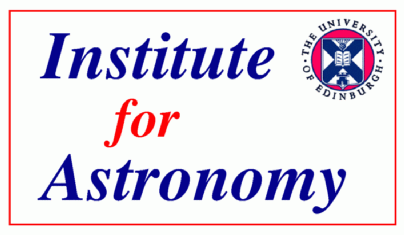

Related Links:The Lyman-α forest |
BackgroundNumerical simulations have played a key role in understanding
the development of large-scale structure in the Universe, from
the distribution of galaxies to the formation of galaxy clusters.
Most of this work was accomplished with pure gravity codes. Only
recently has it become possible to begin incorporating the needed
physics to compute the formation of the objects themselves. Baryons
are a vital component of galaxies. No complete understanding of the
formation of the stars and planets within galaxies is possible without
first understanding the history of the baryons since the Big Bang, for
they formed the first generation of stars and continue to play a role
in galactic star formation. Intergalactic Medium simulationsPrevious Numerical Methods EmployedMost of the early simulations of structure formation in the
IGM have utilised gravity codes combined with hydrodynamics. The
simulations of Zhang, Anninos & Norman (1995), Zhang, Anninos,
Norman
& Meiksin (1997) and Zhang, Meiksin, Anninos & Norman (1998)
used a combined N-body Particle-Mesh (PM) code combined with a
finite-difference hydrodynamics scheme on a fixed comoving grid
(Anninos, Norman & Clarke 1994). Parallel simulations were
performed
by Cen, Miralda-Escude, Ostriker & Rauch (1994) using an
alternative
finite-difference scheme, and by Hernquist, Katz, Weinberg &
Miralda-Escude (1996) and Theuns, Leonard & Efstathiou (1998) using
Smoothed Particle Hydrodynamics (SPH), for solving the fluid
equations. The SPH code has the advantage of resolving dense
structures by automatically moving the fluid particles to the dense
regions. The price paid is sparser resolution in regions that are of
moderate to low density. Since most of the volume of the Universe
contains baryons of moderate overdensities are less, a
finite-difference scheme on a fixed comoving grid is more efficient at
resolving the structures relevant to the bulk of the
IGM. Finite-difference schemes also are an order of magnitude or more
faster at achieving the same spatial resolution as an SPH code,
provided there are no large density contrasts in the systems desired
to be resolved. When there are, a more sophisticated finite-difference
approach may be used based on Adaptive Mesh Refinement. Solving the hydrodynamics equations along with the gravity,
however, incurs a considerable computational overhead in computing
time. Combined gravity and hydrodynamics simulations of the IGM have
shown that the gas density is well modelled by equating the local gas
cosmological overdensity to the local dark matter overdensity (Zhang
et al. 1998). This suggests a more efficient approach in which only
the gravity is solved for, and the gas density is scaled according to
the dark matter overdensity (Gnedin & Hui 1998). Such an approach
has
the advantage of permitting many more simulations to be performed,
allowing a broad range of cosmological parameters to be tried as well
as allowing an assessment of the impact of additional effects like
discreteness of the sources or varying equations of state of the
gas. The method, however, works less well in underdense regions, is
not exact, and does not allow for proper hydrodynamical reaction
(pressure forces) to the photoionization heating, degrading the
accuracy of the predictions (Meiksin & White 2001). For all these
reasons, it is desirable for detailed computations and comparisons
with observations to use a combined gravity-hydrodynamics code. Current Numerical MethodsThe new direction of structure formation in the IGM invovles simulations with the radiative transfer coupled to a gravity-hydrodynamics code. The latter is particularly important for tying the results to galaxy formation and small sub-galactic systems, many of which appear as Damped Lyman-α Absorbers. Simulations of Tittley & Meiksin (2007) and Meiksin, Tittley & Brown (2010) were performed using radiative transfer coupled to a pure gravity N-body Particle-Mesh (PM) code. The first IGM simulations with radiative transfer coupled to a hydrodynamics code (a true radiative-hydrodynamics computation) was reported by Meiksin & Tittley (2012). This simulation traced the back-reaction of gas clumps heated by helium reionization on the propagation of the helium ionization fronts themselves. For further information....Review articles may be found here , here. and here.
ReferencesAnninos P., Norman M.L., Clarke D.A., 1994, ApJ, 436, 11 Bond J.R., Kofman L., Pogosyan D., 1996, Nature, 380, 603 Cen R., Miralda-Escude J., Ostriker J.P., Rauch M., 1994, ApJ, 437, L9 Gnedin N.Y., Hui L., 1998, MNRAS, 296, 44 Hernquist L., Katz N., Weinberg D.H., Miralda-Escude J., 1996, ApJ, 457, L51 Meiksin A., 2009, RevModPhys, 81, 1405 Meiksin A., Tittley E.R., 2012, MNRAS, 423, 7 Meiksin A., Tittley E.R., Brown, C.K., 2010, MNRAS, 401, 77 Meiksin A., White M., 2001, MNRAS, 324, 141 Theuns T., Leonard A., Efstathiou G., 1998, MNRAS, 297, L49 Tittley E.R., Meiksin A., 2007, MNRAS, 380, 1369 Zhang Y., Anninos P., Norman M.L., 1995, ApJ, 453, L57 Zhang Y., Anninos P., Norman M.L., Meiksin A., 1997, ApJ, 485, 496 Zhang Y., Meiksin A., Anninos P., Norman M.L., 1998, ApJ, 495, 63 |